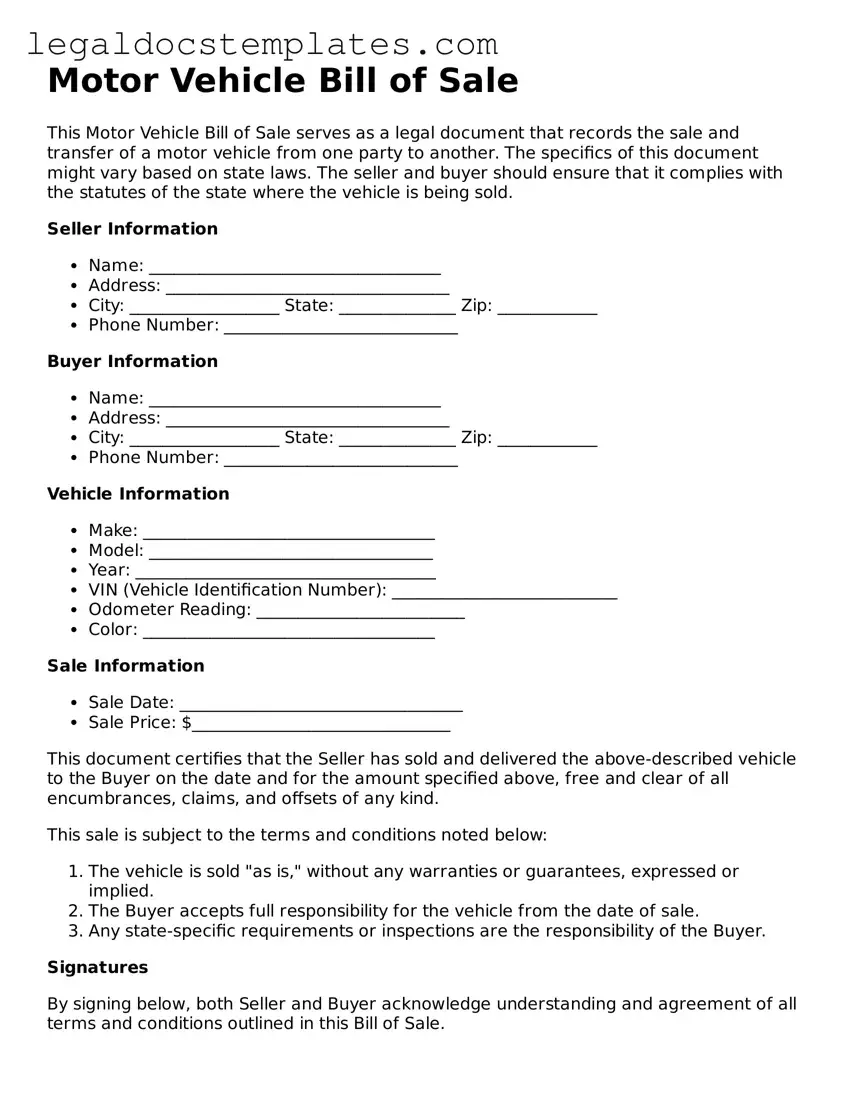A Warranty Deed is similar to a Motor Vehicle Bill of Sale as both are formal documents used in the transfer of ownership. While a Motor Vehicle Bill of Sale is specific to vehicles, a Warranty Deed is used for the sale of real property (land and buildings). Both documents provide proof of the transaction and guarantee that the seller has the legal right to sell the item or property.
A Promissory Note shares similarities with a Motor Vehicle Bill of Sale since both documents represent an agreement between two parties. However, a Promissory Note is a financial instrument, detailing the borrower's promise to pay back a specified amount to the lender. It's like the financial agreement for payment that might accompany a Bill of Sale when the purchase involves payment terms.
A Quitclaim Deed, much like a Motor Vehicle Bill of Sale, is used in transferring rights or interest in property. But, unlike a Bill of Sale which is used for vehicles, a Quitclaim Deed transfers interest in real estate without any warranties on the title, meaning it transfers ownership as-is, without guaranteeing that the title is clear.
A Sales Agreement is closely related to a Motor Vehicle Bill of Sale because both outline the terms of a sale between a buyer and a seller. A Sales Agreement, however, can be used for various types of goods and services and typically includes more detailed terms and conditions of the sale, such as delivery details, payment terms, and warranties.
A General Bill of Sale, similarly to a Motor Vehicle Bill of Sale, functions as a receipt for a transaction between two parties. Whereas the Motor Vehicle Bill of Sale is specific to vehicles, a General Bill of Sale can be used for the sale of personal property items, such as furniture or equipment, providing proof of purchase and transfer of ownership.
An Invoice, like a Motor Vehicle Bill of Sale, is issued by the seller to the buyer, detailing the sale transaction. However, an invoice primarily serves as a request for payment for goods or services provided, outlining the cost, quantity, and specific details of what has been sold, which might not necessarily transfer ownership.
A Title Certificate is another document associated with the ownership and sale of a vehicle, like the Motor Vehicle Bill of Sale. The Title Certificate, however, specifically represents legal ownership and is required to be transferred to the new owner after the sale, signifying that the ownership change has been officially recorded.
Lastly, a Gift Affidavit is somewhat akin to a Motor Vehicle Bill of Sale in the context of transferring ownership rights, but it is used when property is given as a gift, not sold. This document serves as a legal proof that an item was indeed given as a gift, stating that the transaction does not involve financial exchange, unlike the sale process detailed in a Bill of Sale.
